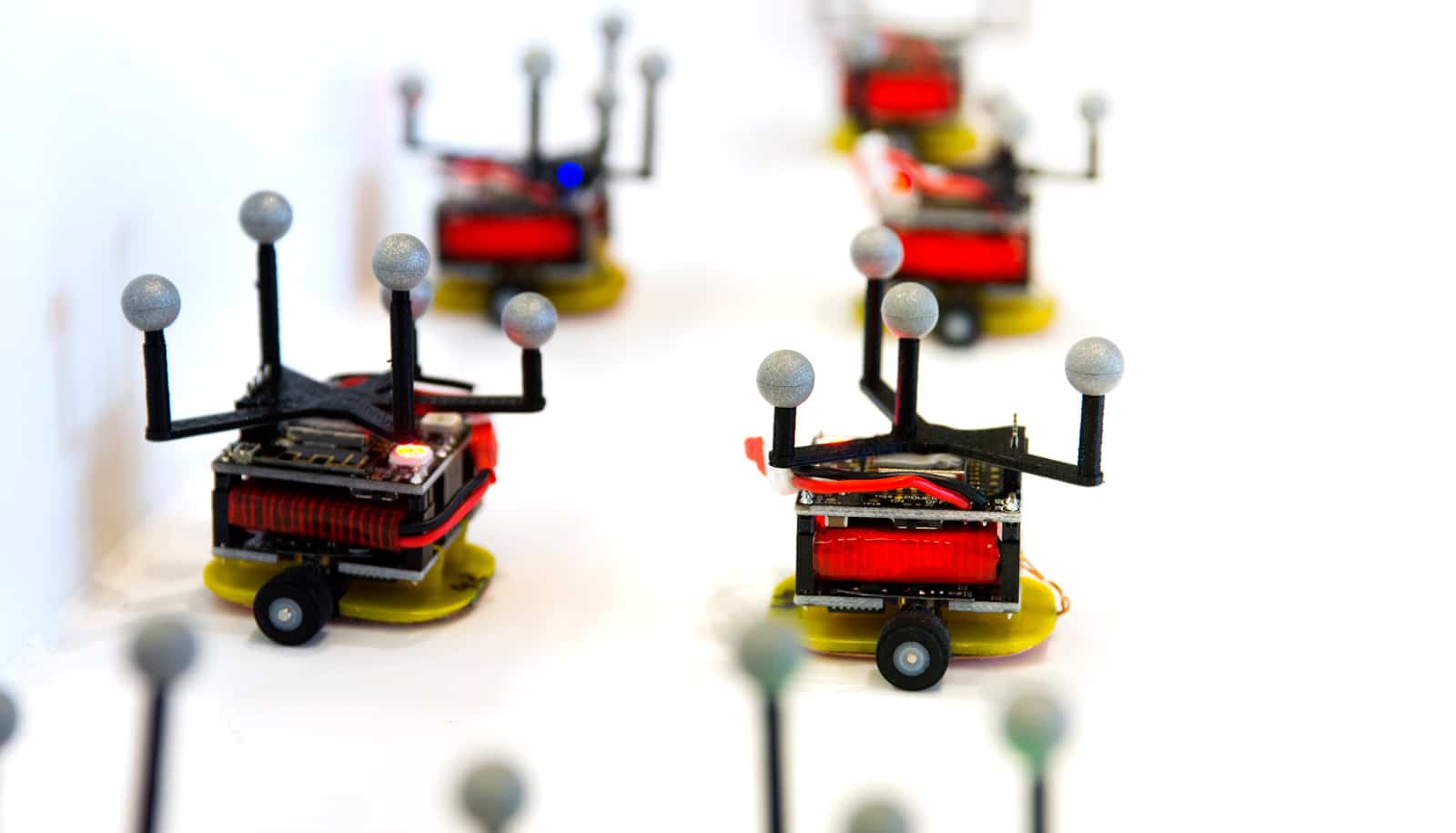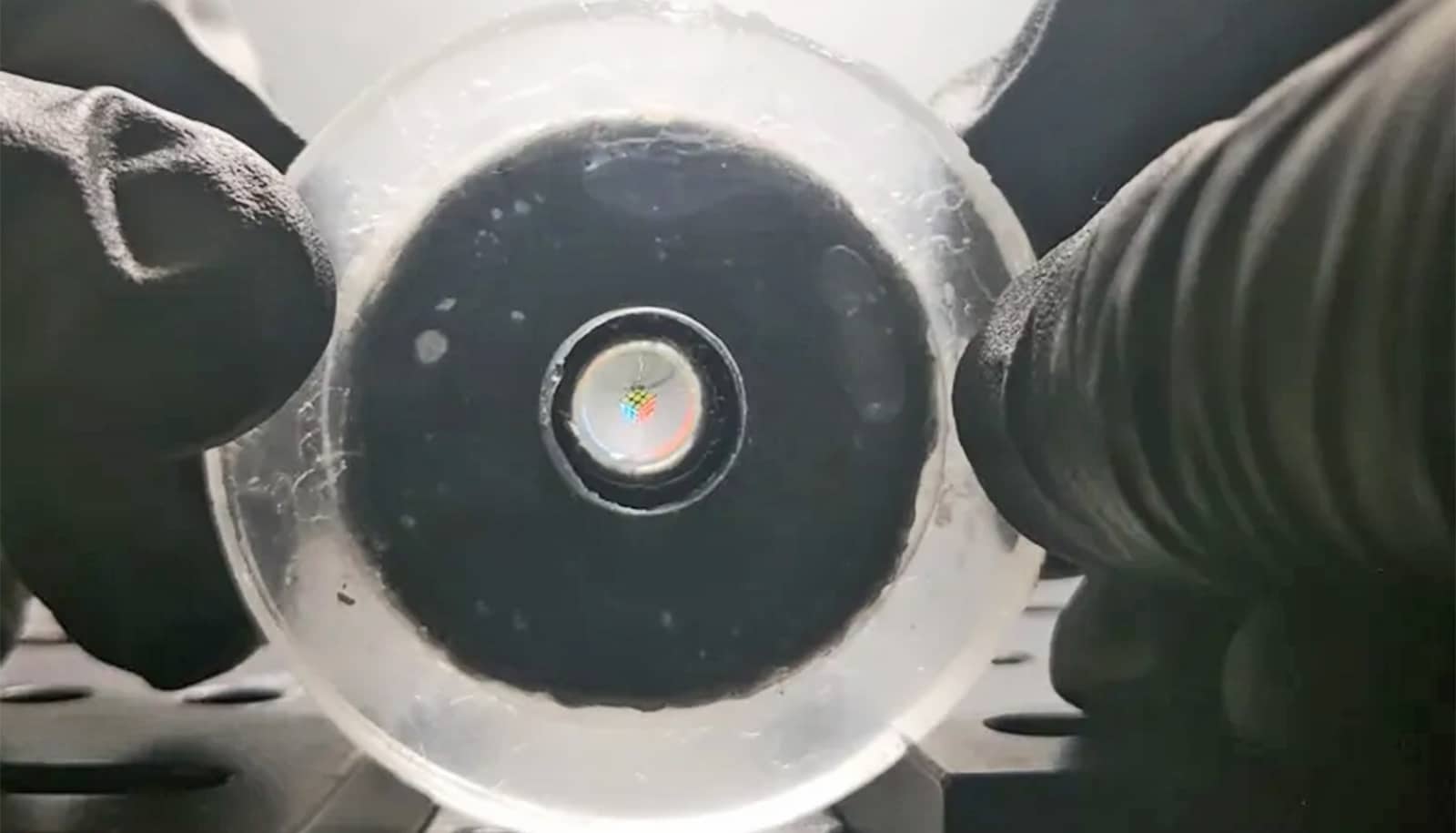Researchers from around the globe can write their own computer programs, upload them, then get the results as machines at Georgia Tech carry out the commands. The researchers will even send video evidence of the experiment.
This Robotarium opens this month. It’s a 725-square-foot facility that houses nearly 100 rolling and flying swarm robots.
The concept is easy, Magnus Egerstedt says: Robots for everyone.
“Building and maintaining a world-class, multi-robot lab is too expensive for a large number of current and budding roboticists. It creates a steep barrier for entry into our field,” says Egerstedt, a professor of electrical and computer engineering.
“Too many robot labs are hidden away behind closed doors.”
“We need to provide more access in order to continue creating the next generation of robots and robot-assisted technologies. The Robotarium will allow that at an unprecedented scale.”
In the facility, motion capture cameras cling from the ceiling and peer down at the lab’s centerpiece: a white, bowl-shaped arena that looks like a 12′ x 14′ hockey rink. That’s where up to 80 palm-sized, rolling robots scoot around the surface.
They automatically activate when given a program from someone in the room or a remote coder in a different state or country. Once it finishes the experiment, the swarm autonomously returns to wireless charging slots on the edge of the rink and waits to be activated for its next mission.
The lab is currently set up for the 3D-printed rolling machines. In a few weeks, autonomous quadcopters the size of small dinner plates will whiz through the air for remote flying experiments (a retractable net will keep them from slamming into walls or people if things unexpectedly get out of control). A large window allows curious onlookers to watch the organized chaos.
“The Robotarium is a terrarium for robots,” Egerstedt says. “We wanted to create a space where anyone, at any time of the day or night, can walk past the lab and see robots in action. Too many robot labs are hidden away behind closed doors.”
That’s exactly how Egerstedt’s team worked for the last year and a half. They experimented using a tabletop version of the Robotarium. The mini surface allowed them to iron out kinks and identify potential problems with open-access robotics. For instance, what if someone purposely uploaded code that would cause the bots to collide and demolish each other?
Toilet or chair? Robots that ‘see’ in 3D can tell
“That’s why we created algorithms that wrap a virtual barrier around each machine to prevent collisions,” says Siddharth Mayya, a PhD student in the lab. “We also had to worry about hackers.”
“I want to do for robotics what MOOCs have done for education—now anyone who knows how to code can work with robots.”
Part of the work included developing processes to protect the system from cyber threats.
Not everything always went smoothly. When PhD student Li Wang hit a button that sent his swarm of quadcopters shooting toward the ceiling, “It rained robots that day,” he recalls.
Another time, a rolling swarm descended on the same charging station at the same time. The robots literally fought for a spot until they reached the metal rail, which shorted them out and sprayed sparks across the room.
That’s why the Robotarium’s charging stations are now wireless.
To date, more than 100 research groups have logged on and used the mini-version.
Most are roboticists without access to swarm technology. Others are biologists. One team chose to use robots, instead of computer simulations, to better understand how ants interact with each other when choosing a new queen.
Telescoping design would make awesome robots
Egerstedt thinks the new facility will foster more collaboration within the robotics community, allowing scientists and engineers to share their findings more widely and build on successes. The open access setting will counter the lack of resources that sometime stands in the way of research.
“I want to do for robotics what MOOCs (massive open online courses) have done for education—now anyone who knows how to code can work with robots,” he says.
He already has a new recruit. This past April, a group of fifth graders stopped in for a tour. Egerstedt saw one of the 10-year-olds stuffing one of the robots into his pocket while turning to leave.
“I asked him why he took it,” Egerstedt remembers. “He said he wanted to make it better.”
How?
“By adding a flamethrower.”
The National Science Foundation and Office of Naval Research funded the lab.
Source: Georgia Tech



